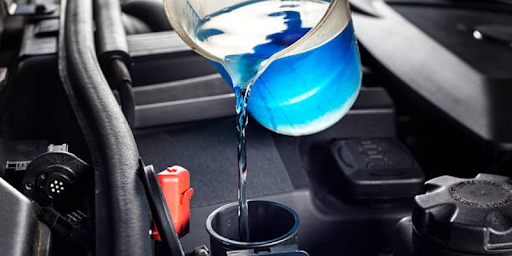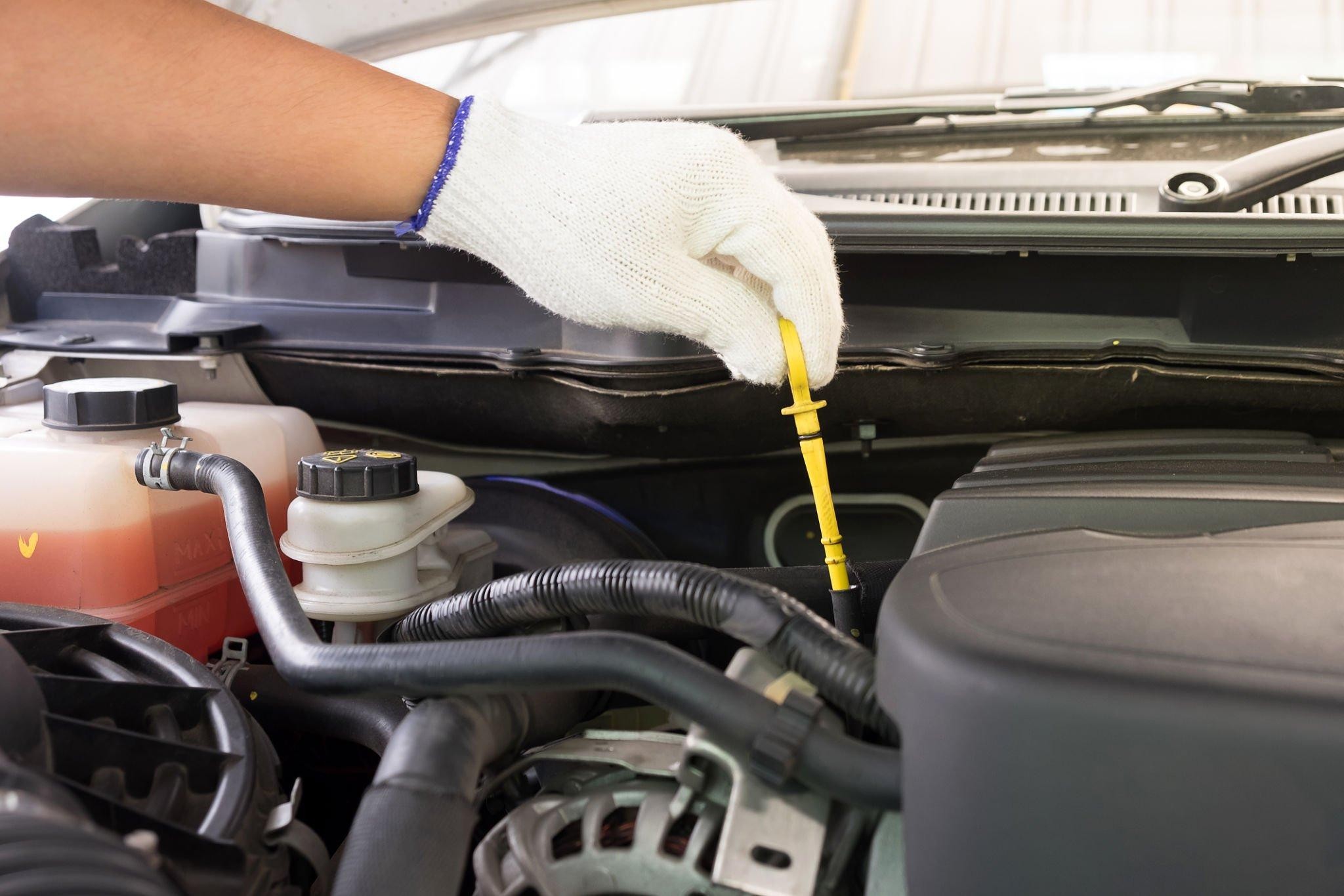Transmission Fluid Top-Up: Running vs. Not Running
What is your way of adding fluid to the car? Running the engine or turning it off? Knowing the importance of transmission fluid for correct functionality of the vehicle, but still needs clarification on: Do you Leave the Car Running When Adding Transmission Fluid? Read the article to learn the best method of adding fluid and the hidden reasons behind it.
Importance of Adding Transmission Fluid with a Warm Engine
You must add the transmission fluid when the engine is running. The main reason for doing so is the warm engine expands the fluid and helps read the adequate amount on the dipstick. If it is added when the engine is cold, overfilling will be the result that causes foaming and pressure on the transmission.

Do you Leave the Car Running When Adding Transmission Fluid?
Either you add the transmission fluid or estimate the correct level of it. Firstly, you must make the engine run to warm the fluid so that it expands and provides you with an adequate reading. What is the actual phenomenon behind this?
Warming Up the Engine With Transmission Fluid
A warm engine keeps the fluid warm and expanding, helping you add only the required amount and mark it at a high level when checked through a dipstick. So, yes, you can leave the car running when adding transmission fluid.
Unique Fluid Check Procedure
Almost all the cars require the same strategy when adding or checking the fluid level, but Honda cars maintain a slightly distinct feature. You cannot have to run the engine but warm it up to its operating temperature when checking the fluid level.
Checking Transmission Fluid Level
On the other hand, when you check your transmission fluid without turning the engine on or at its operating temperature. The same transmission fluid expands at optimal temperature or does not expand as there is no heat to expand it, and mark it at a low level on the dipstick.
How to Check Your Transmission Fluid?

How do you know the transmission fluid is running low in the car? You must check the transmission fluid level to get the correct fluid reading. However, there are a few steps to remember when adding transmission fluid to a running engine.
So, start the process by parking the vehicle at a level surface, turning the engine on, and waiting until it reaches its operating temperature.
Pull Out the Dipstick
After finding the dipstick handle; the next step is to pull out the dipstick and clean it with a paper towel or rag. This step will help you obtain a correct and accurate reading of the fluid level.
Re-insert to Estimate the Fluid Level
As you clean the dipstick, re-insert it to the entire reservoir length and pull it again. You will notice that it has a few markings at its edge. When the fluid is warm, you will obtain the exact reading between the dipstick’s hot or cold edge. If the fluid levels appear low, check the correct operating temperature and then add the fluid level.
How to Add Transmission Fluid?
Adding transmission fluid follows the same path as checking the fluid except for one or two differences. The only precaution to remember is that you can only add more transmission fluid when it is running low or needs a replacement.

You can also get help from the owner’s manual instructions to know the type of particular fluid required by the vehicle and why it is essential to add it when the engine is running or warm.
Adding only the required amount will prevent pouring extra fluid, which is alarming for the transmission’s health.
1- Set the Engine Idle
The first step of adding the fluid is the same as checking it. Running the engine does not mean you drive it for several miles, but start the engine, keep it running while parked idly on a flat surface, and start the procedure.
2- Place the Transmission Funnel
Decide on the type of fluid which suits the best to your vehicle. Remove the oil dipstick, and insert the automatic transmission fluid dipstick funnel. Start pouring the transmission fluid slowly, avoiding overfilling.
3- Depress the Brake
After adding the required amount of the transmission fluid, you must depress the parking brake and run the transmission by turning all the gears, to allow the circulation of the fluid in all the transmission’s parts. Check the transmission fluid level by the steps mentioned above and add more if necessary, followed by sealing the dipstick into its place.
Note: the car must be idle when turning the gears for fluid circulation
How Often Should I Change Transmission Fluid?

If you need the transmission fluid change highly depends on what way you drive the car or the type of vehicle. However, there are specific ways by which you can assure the Car Transmission Maintenance and reduce the worry of changing or replacing it repeatedly.
Driving Habits
To maintain the car from losing the excess transmission fluid. Look at how you drive the car, but instead, implement healthy driving habits. Do not accelerate fast, and avoid grinding the gears during shifting.
Correct Fluid
Every vehicle is fixed to its particular transmission service type of transmission fluid. Selecting the wrong or low transmission fluid that does not suit the vehicle’s transmission invites various damages beyond repair.
Avoid Overfilling
Adding transmission fluid to the cold engine is useless because the fluid does not expand at this temperature, and you end up overfilling it. High transmission fluid levels are dangerous for the engine’s transmission and system as it trigger leaking, gear slipping, and overheating.
Check on the Fluid Color

Inspect the different colors of the fluid from fresh to getting old. The pinkish color is what you add, while the dark brown or red indicates that fluid gets old and steps towards burning smell a change. Also, the color converts into dark brown when the fluid oxidizes and smells burnt.
Summing Up
As you already know the significance of checking and adding the transmission fluid when the engine is running, you must apply it to your car to protect the transmission. In this article, I have mentioned why and how to add fluid when running the engine. Moreover, in what ways you can preserve transmission fluid is additional information.
Frequently Asked Questions
How Long Should I Let My Car Run Before Checking the Transmission Fluid?
The engine reaches its operating temperature when you leave the car running for about 15-20 minutes. You can initiate checking the fluid level by removing the transmission dipstick, cleaning it, and re-inserting it to get the correct reading between Hot or Cold edges or between Add or Full lines.
Can you Check the Transmission Fluid without the Car Running?
Yes, you can check the correct transmission fluid without running the car. The primary focus is to provide enough temperature for the fluid to expand. You can also check the fluid level by running the engine first and then turning it off when the engine gets warm.
How Much Transmission Fluid Do I Add if Empty?
If the transmission fluid is leaked, you can add 4-12 quarts of the fluid to fill the reservoir. You must remember the owner’s manual instructions for the specific type and amount of fluid to pour. However, avoid overfilling the fluid by checking the adequate levels using the dipstick.
What Color Should Transmission Fluid Be?
The Transmission fluids change different colors in different stages of utilization. The color of the freshly installed fluid is pinkish. The impurity-free fluid is translucent and clear, helping transmission parts to function correctly.






